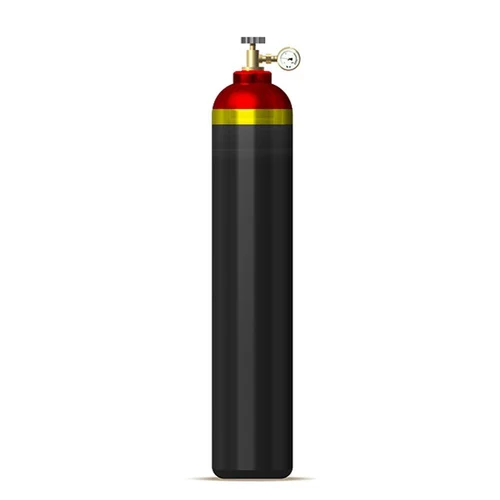Anhydrous Ammonia Gases
| ANHYDROUS AMMONIA | Total purity by volume(%) | Maximum levels of impurities (ppm by volume) | |||||||
| Grade | O2 | H 2 O | Ar | CO | CO2 | Noxides | Total Hydrocarbons | Other Impurities | |
| Special | 99.99 | 0.5 | 0.1 | 0.1 | 0.05 | 0.1 | 0.01 | 0.5 | Trace |
| Grade-I | 99.98 | 1.0 | 0.2 | 0.2 | 0.1 | 0.2 | 0.05 | 1.0 | Trace |
| Grade-II | 99.95 | 2.0 | 0.5 | 0.5 | 0.2 | 0.5 | 0.1 | 2.0 | 0.5 |
Technical Specifications
| Color | Colorless Gas |
| Chemical Name | NH3 |
| Molecular Weight | 17.03 g/mol |
| Boiling Point | -33.34°C (-28°F) |
| Melting Point | -77.7°C (-107.9°F) |
| Density | 0.682 kg/m3 (at 0°C) |
| Flash Point | Non-flammable, but can form explosive mixtures |
| Autoignition Temperature | 651°C (1204°F) |
| Flammability Limits | 15% to 28% by volume in air |
| Storage Pressure | Liquefied at ambient temperature (Pressure varies) |
Application Uses
Fuel for Portable Stoves: Butane is commonly used as a fuel in portable stoves, especially for camping and outdoor activities due to its efficiency and ease of storage in canisters.
Fuel for Lighters: Butane is the primary fuel used in many disposable lighters, providing a reliable and easy-to-use source of ignition for everyday use.
Propellant in Aerosols: Butane is used as a propellant in various aerosol products, such as hairsprays, deodorants, and air fresheners, helping to release the product in a spray form.
Industrial Fuel: Butane is used as a fuel for industrial processes, including in refineries and manufacturing plants, due to its ability to produce a clean, high-energy flame.
Raw Material for Synthesis: Butane is utilized in the chemical industry as a raw material for producing other chemicals like butadiene and isobutene, essential for the manufacture of synthetic rubber and other polymers.
Blended with Propane: Butane is often mixed with propane to form liquefied petroleum gas (LPG), which is used in heating, cooking, and even as an alternative vehicle fuel.
Refrigerant in Cooling Systems: Butane is sometimes used as a refrigerant in refrigeration systems, particularly in smaller, domestic appliances like fridges and freezers due to its low environmental impact compared to other refrigerants.

